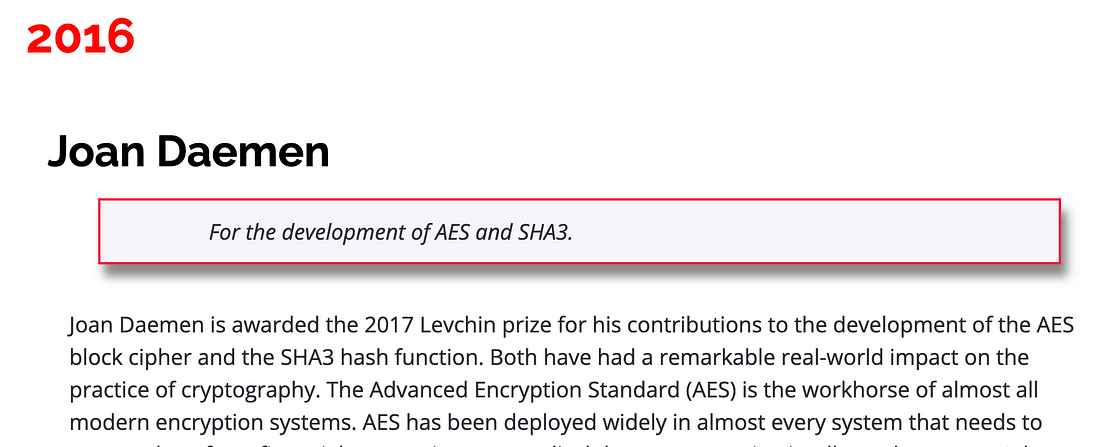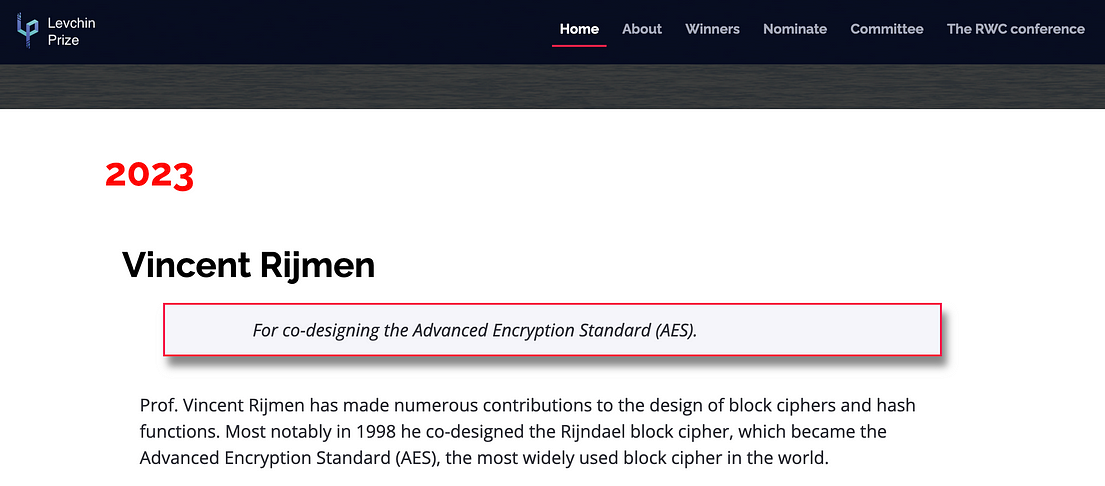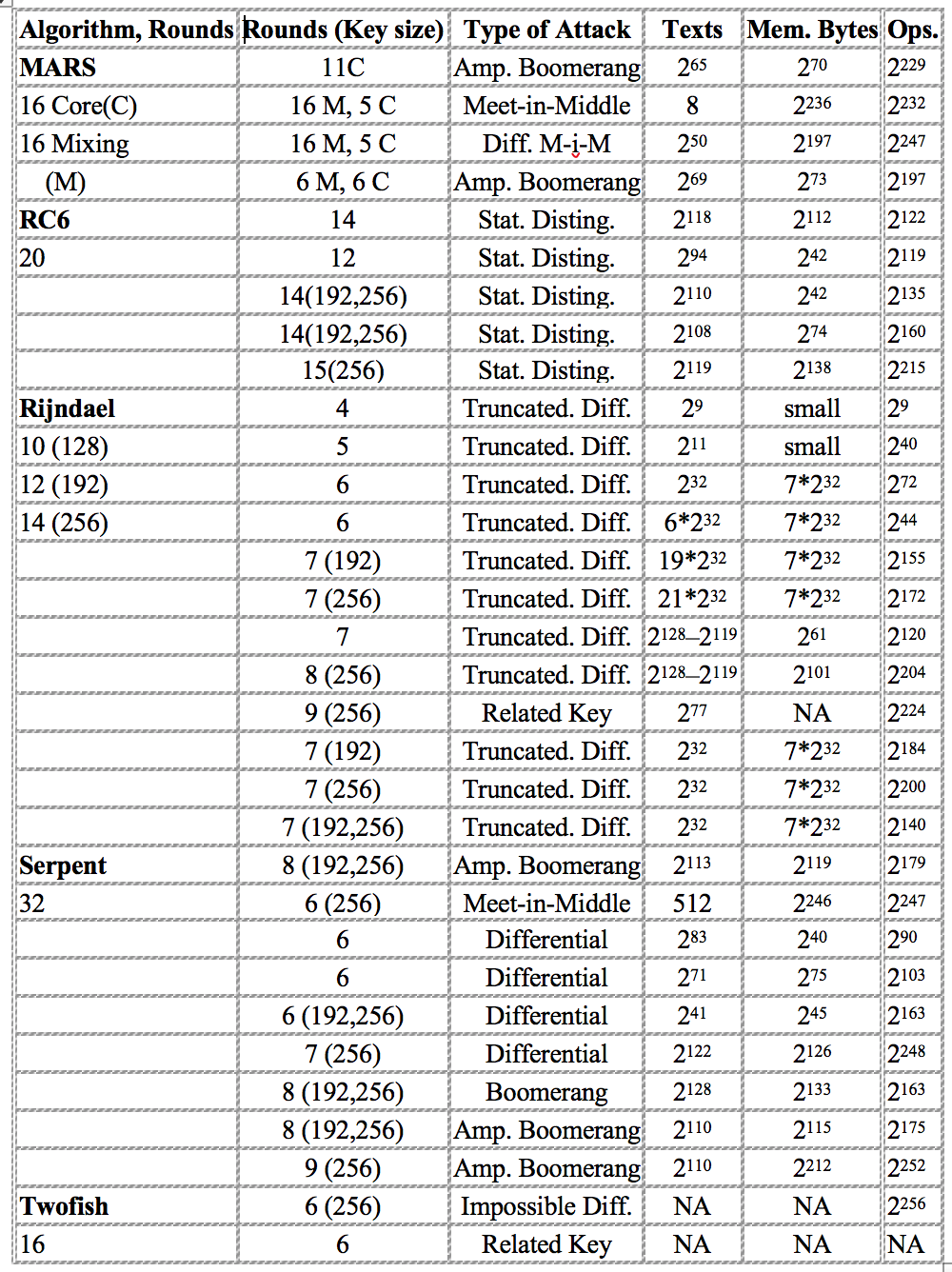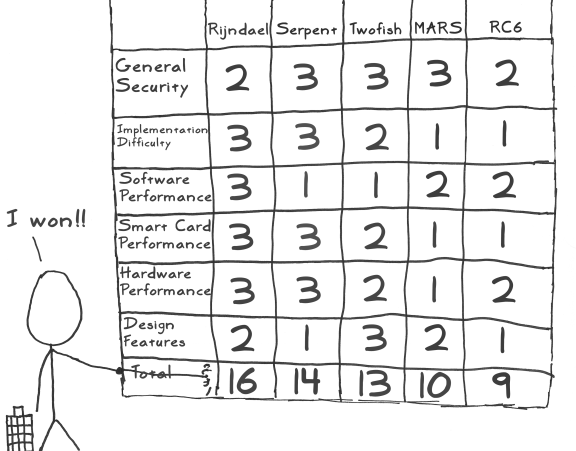Bill Buchanan - Which People Have Secured Our Digital World More Than Any Other?
Release Date: 09/03/2023
 World-leaders in Cryptography: Leslie Lamport
World-leaders in Cryptography: Leslie Lamport
ASecuritySite Podcast
Please excuse the poor quality of my microphone, as the wrong microphone was selected. In research, we are all just building on the shoulders of true giants, and there are few larger giants than Leslie Lamport — the creator of LaTeX. For me, every time I open up a LaTeX document, I think of the work he did on creating LaTeX, and which makes my research work so much more productive. If I was still stuck with Microsoft Office for research, I would spend half of my time in that horrible equation editor, or in trying to integrate the references into the required format, or in...
info_outline World-leaders in Cryptography: Daniel J Bernstein
World-leaders in Cryptography: Daniel J Bernstein
ASecuritySite Podcast
Daniel J Bernstein (djb) was born in 1971. He is a USA/German citizen and a Personal Professor at Eindhoven University of Technology and a Research Professor at the University of Illinois at Chicago. At the tender age of 24 — in 1995 — he, along with the Electronic Frontier Foundation — brought a case against the US Government related to the protection of free speech (Bernstein v. United States: ). It resulted in a ruling that software should be included in the First Amendment. A core contribution is that it has reduced government regulations around cryptography. It was a sign of the...
info_outline World-leaders in Cryptography: Jan Camenisch
World-leaders in Cryptography: Jan Camenisch
ASecuritySite Podcast
Jan is the CTO and a Cryptographer at DFINITY, and, since 1998, he has consistently produced research outputs of rigour, novelty and sheer brilliance [here]. He was recently awarded the Levchin Prize at Real World Crypto 2024 - along with Anna Lysyanskaya. Jan’s research core happened when he was hosted in the IBM Zurich Research Lab, but has since moved to DFINITY, and is still producing research outputs that are some of the best in the whole of the computer science research area. He has published over 140 widely cited papers and has been granted around 140 patents. Jan has also received...
info_outline An Interview with Ted Miracco
An Interview with Ted Miracco
ASecuritySite Podcast
Ted Miracco is the CEO of Approov and which is Scottish/US company that is headquartered in Edinburgh. Miracco has over 30 years of experience in cybersecurity, defence electronics, RF/microwave circuit design, semiconductors and electronic design automation (EDA). He co-founded and served as CEO of Cylynt, which focuses on intellectual property and compliance protection
info_outline World-leaders in Cybersecurity: Troy Hunt
World-leaders in Cybersecurity: Troy Hunt
ASecuritySite Podcast
Troy is a world-leading cybersecurity professional. He created and runs the Have I Been Pwned? Web site, and which contains details of the most significant data breaches on the Internet. Along with this, he has developed other security tools, such as ASafaWeb, which automated the security analysis of ASP.NET Web sites. Troy is based in Australia and has an extensive blog at
info_outline The Greatest Step Change in Cybersecurity Ever! Welcome to the New and Scary World of Generative AI and Cybersecurity
The Greatest Step Change in Cybersecurity Ever! Welcome to the New and Scary World of Generative AI and Cybersecurity
ASecuritySite Podcast
This is Day 0 of a new world of cybersecurity. Everything changes from here. There will be a time before Generative AI (GenAI) in cybersecurity and a time after it. Over the last two years, GenAI has come on leaps and bounds, and where it once suffered from hallucinations, took racist and bigoted approaches, and often was over-assertive, within ChatGPT 4.5, we see the rise of a friendly and slightly submissive agent, and that is eager to learn from us. This LLM (Large Language Model) approach thus starts to break down the barriers between humans and computers and brings the opportunity to gain...
info_outline Towards the Memex: All Hail The Future Rulers of our World
Towards the Memex: All Hail The Future Rulers of our World
ASecuritySite Podcast
And, so George Orwell projected a world where every single part of our lives was monitored and controlled by Big Brother. Arthur C Clark outlined the day when machines focused solely on a goal — even if it was to the detriment of human lives. And, Isaac Asimov outlined a world where machines would have to be programmed with rules so that they could not harm a human. The Rise of the Machine With the almost exponential rise in the power of AI, we are perhaps approaching a technological singularity — a time when technological growth becomes uncontrollable and irreversible, and which can have...
info_outline World-leaders in Cryptography: Marty Hellman (March 2024)
World-leaders in Cryptography: Marty Hellman (March 2024)
ASecuritySite Podcast
This seminar series runs for students on the Applied Cryptography and Trust module, but invites guests from students from across the university. Martin is one of the co-creators of public key encryption, and worked alongside Whitfield Diffie in the creation of the widely used Diffie-Hellman method. In 2015, he was presented with the ACM Turing Award (the equivalent of a Nobel Prize in Computer Science) for his contribution to computer science. He is currently a professor emeritus at Stanford University. https://engineering.stanford.edu/node/9141/printable/print
info_outline World-leaders in Cryptography: Vincent Rijmen (March 2024)
World-leaders in Cryptography: Vincent Rijmen (March 2024)
ASecuritySite Podcast
Vincent Rijmen is one of the co-creators of the NIST-defined AES standard (also known as Rijndael). He also co-designed the WHIRLPOOL hashing method, along with designing other block ciphers, such as Square and SHARK. In 2002, Vincent was included in the Top 100 innovators in the world under the age of 35, and, along with Joan Daemen, was awarded the RSA Award for Excellence in Mathematics. He recently joined Cryptomathic as a chief cryptographer, and also holds a professor position (gewoon hoogleraar) at K.U.Leuven, and adjunct professorship at the University of Bergen, Norway. His paper on...
info_outline World-leaders in Cryptography: Whitfield Diffie
World-leaders in Cryptography: Whitfield Diffie
ASecuritySite Podcast
Whitfield Diffie is one of the greatest Computer Scientists ever. He - along with Marty Hellman - was one of the first to propose the usage of public key encryption and co-created the Diffie-Hellman (DH) key exchange method. Overall, the Diffie-Hellman method is still used in virtually every Web connection on the Internet, and has changed from using discrete log methods to elliptic curve methods. In 2015, Whitfield was also awarded the ACM Turing Prize - and which is the Nobel Prize equivalent in Computer Science. In this on-line talk he meets with Edinburgh Napier University students,...
info_outlineAnd, so, if you could pick one or two people who have contributed most to our online security, who would it be? Ron Rivest? Shafi Goldwasser? Ralph Merkle? Marty Hellman? Whitfield Diffie? Neal Koblitz? Well, in terms of the number of data bytes protected, that prize is likely to go to Joan Daemen and Vincent Rijmen, and who created the Rijndael method that became standardized by NIST as AES (Advanced Encryption Standard). If you are interested, Rijndael (“rain-doll”) comes from the names of its creators: Rijmen and Daemen (but don’t ask me about the rogue “l” at the end).

And, so, Joan Daemen was awarded the Levchin Prize at the Real World Symposium conference in 2016:

Now, his co-researcher, Vincent Rijmen — a Professor at KU Leuven — has been awarded the Levchin Prize at the Real-World Crypto Symposium [here]:

This follows illustrious past winners, including Paul Kocher (for work on SSL and side-channels), Dan Coppersmith (on cryptoanalysis), Neal Koblitz and Victor Miller (for their co-invention of ECC) and Ralph Merkle (for work on digital signatures and hashing trees).
Vincent’s track record in high-quality research work is exceptional and especially in the creation of the Rijndael approach to symmetric key encryption [here]:

Before AES, we had many symmetric key encryption methods, including DES, 3DES, TwoFish, BlowFish, RC4, and CAST. But AES came along and replaced these. Overall, ChaCha20 is the only real alternative to AES, and where it is used in virtually every web connection that we have and is by far the most popular method in encrypting data. And, it has stood the test of time — with no known significant vulnerabilities in the method itself. Whilst we might use weak keys and have poor implementations, Rijndael has stood up well.
AES method
With AES, we use symmetric key encryption, and where Bob and Alice share the same secret key:

In 2000/2001, NIST ran a competition on the next-generation symmetric key method, and Rijndael won. But in second place was Serpent, which was created by Ross Anderson, Eli Biham, and Lars Knudsen. Let’s have a look at the competition and then outline an implementation of Serpent in Go lang. In the end, it was the speed of Rijndael that won over the enhanced security of Serpent. If NIST had seen security as more important, we might now be using Serpent than Rijndael for AES.
NIST created the race for AES (Advanced Encryption Standard). It would be a prize that the best in the industry would join, and the winner would virtually provide the core of the industry. So, in 1997, NIST announced the open challenge for a block cipher that could support 128-bit, 192-bit, and 256-bit encryption keys. The key evaluation factors were:
Security:
- They would rate the actual security of the method against the others submitted.
- This would method the entropy in the ciphertext — and show that it was random for a range of input data.
- The mathematical foundation of the method.
- A public evaluation of the methods and associated attacks.
Cost:
- The method would provide a non-exclusive, royalty-free basis licence across the world;
- It would be computationally and memory efficient.
Algorithm and implementation characteristics:
- It would be flexible in its approach, and possibly offer different block sizes, key sizes, convertible into a stream cipher, and so on.
- Be ready for both hardware and software implementation for a range of platforms.
- Be simple to implement.
Round 1
The call was issued on 12 Sept 1997 with a deadline of June 1998, and a range of leading industry players rushed to either create methods or polish down their existing ones. NIST announced the shortlist of candidates at a conference in August 1998, and which included some of the key leaders in the field, such as Ron Rivest, Bruce Schneier, and Ross Anderson (University of Cambridge) [report]:
- Australia LOKI97 (Lawrie Brown, Josef Pieprzyk, Jennifer Seberry).
- Belgium RIJNDAEL (Joan Daemen, Vincent Rijmen).
- Canada: CAST-256 (Entrust Technologies, Inc), DEAL (Richard Outerbridge, Lars Knudsen).
- Costa Rica FROG (TecApro Internacional S.A.).
- France DFC (Centre National pour la Recherche Scientifique).
- Germany MAGENTA (Deutsche Telekom AG).
- Japan E2 (Nippon Telegraph and Telephone Corporation)
- Korea CRYPTON (Future Systems, Inc.)
- USA: HPC (Rich Schroeppel), MARS IBM, RC6(TM) RSA Laboratories [try here], SAFER+ Cylink Corporation, TWOFISH (Bruce Schneier, John Kelsey, Doug Whiting, David Wagner, Chris Hall, Niels Ferguson) [try here].
- UK, Israel, Norway SERPENT (Ross Anderson, Eli Biham, Lars Knudsen).
One country, the USA, had five short-listed candidates, and Canada has two. The odds were thus on the USA to come through in the end and define the standard. The event, too, was a meeting of the stars of the industry. Ron Rivest outlined that RC6 was based on RC5 but highlighted its simplicity, speed, and security. Bruce Schneier outlined that TWOFISH had taken a performance-driven approach to its design, and Eli Biham outlined that SERPENT and taken an ultra-conservative philosophy for security in order for it to be secure for decades.
Round 2
And so the second conference was arranged for 23 March 1999, after which, on 9 August 1999, the five AES finalists were announced:
- Belgium RIJNDAEL (Joan Daemen, Vincent Rijmen).
- USA: MARS IBM, RC6(TM) RSA Laboratories, TWOFISH (Bruce Schneier, John Kelsey, Doug Whiting, David Wagner, Chris Hall, Niels Ferguson)
- UK, Israel, Norway SERPENT (Ross Anderson, Eli Biham, Lars Knudsen).
- Canada: CAST-256 (Entrust Technologies, Inc),
The big hitters were now together in the final, and the money was on them winning through. Ron Rivest, Ross Anderson and Bruce Schiener all made it through, and with half of the candidates being sourced from the USA, the money was on MARS, TWOFISH or RC6 winning the coveted prize. While the UK and Canada both had a strong track record in the field, it was the nation of Belgium that surprised some and had now pushed itself into the final [here].
While the other cryptography methods which tripped off the tongue, the RIJNDAEL method took a bit of getting used to, with its name coming from the surnames of the creators: Vincent Rijmen and Joan Daemen.
Ron Rivest — the co-creator of RSA, had a long track record of producing industry-standard symmetric key methods, including RC2, and RC5, along with creating one of the most widely used stream cipher methods: RC4. His name was on standard hashing methods too, including MD2, MD4, MD5, and MD6. Bruce Schneier, too, was one of the stars of the industry, with a long track record of creating useful methods, including TWOFISH and BLOWFISH.
Final
After nearly two years of review, NIST opened up to comments on the method, which ran until May 2000. A number of submissions were taken, and the finalist seemed to be free from attacks, with only a few simplified method attacks being possible:

As we can see in Table 1, the methods had different numbers of rounds: 16 (Twofish), 32 (Serpent), 10, 12, or 14 (Rijndael), 20 (RC6), and 16 (MARS). Rijndael had a different number of rounds for different key sizes, with 10 rounds for 128-bit keys and 14 for 256-bit keys. Its reduced number of rounds made it a strong candidate for being a winner.
In the AES conference to decide the winner, Rijndael received 86 votes, Serpent got 59 votes, Twofish 31 votes, RC6 23 votes, and MARS 13 votes. Although Rijndael and Serpent were similar, and where both used S-boxes, Rijndael had fewer rounds and was faster, but Serpent had better security. The NIST scoring was:

Conclusions
AES has advanced cybersecurity more that virtually all the other methods put together. Without it, the Internet would be a rats-nest of spying, person-in-the-middle attacks, and, would be a complete mess.
